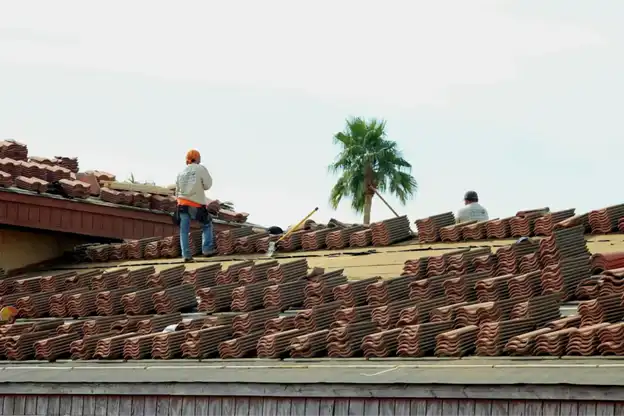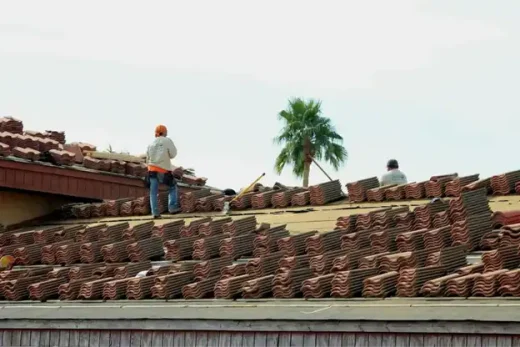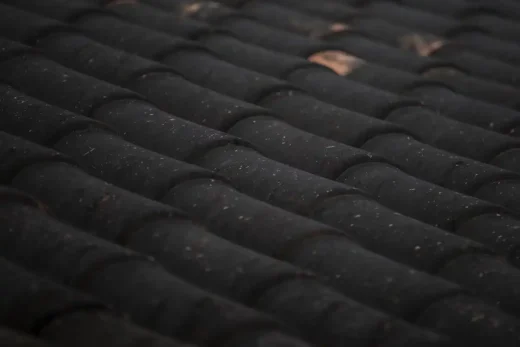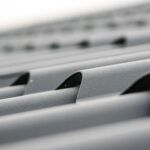How to choose the right roofing materials for your climate, roof repair contractor, Building home maintenance
How to Choose the Right Roofing Materials for Your Climate
18 January 2025
Your roof is more than just a structural necessity – it’s your first line of defense against the elements. Choosing the right roofing materials tailored to your specific climate ensures longevity, energy efficiency, and protection for your home. A roof designed to handle the unique challenges of your environment can save you money and reduce headaches down the road. By understanding how your local climate affects roofing materials, you can make an informed decision that keeps your home safe and comfortable.
Assessing Climate Conditions
Begin by analyzing the weather conditions in your area. If you live in a region with heavy rainfall or frequent snow, materials with excellent water resistance are essential. On the other hand, areas with intense heat require roofing that reflects sunlight to reduce heat absorption. Hiring local roofers in Gainesville ensures you receive expert advice tailored to your region’s weather conditions and construction standards. Knowing whether your location experiences high winds, hailstorms, or temperature extremes will further refine your material options.
Think about how seasonal changes impact your roof. Some materials perform well under consistent conditions but may struggle with temperature fluctuations. For example, asphalt shingles can crack in extreme cold, while metal roofing excels in such environments. Consider whether your region experiences hot summers, freezing winters, or both when deciding on the most suitable option.
Evaluating Environmental Concerns
Certain areas face unique environmental challenges, such as salt-laden air near coastal regions or wildfire risks in dry, forested zones. If you’re near the ocean, materials resistant to corrosion are critical. Fire-prone areas benefit from non-combustible options like clay tiles or metal roofing. Tailor your choice to address these localized risks effectively.
Choosing Materials for Hot Climates
In hot climates, roofs that reflect sunlight rather than absorb it keep your home cooler and reduce energy bills. Materials like metal, clay tiles, and light-colored asphalt shingles are excellent options. They prevent heat buildup, keeping your interior comfortable even during peak summer months.
Prioritizing Ventilation
Proper ventilation is just as important as material selection. Without adequate airflow, heat can accumulate in your attic, putting strain on your cooling system. Roofing options like ridge vents or reflective underlayment enhance ventilation, working in tandem with your material choice to maintain a balanced indoor temperature.
Considering Durability Under Intense Heat
High temperatures can cause some materials to degrade quickly. For instance, wood shingles may dry out and crack, while asphalt shingles can lose their integrity over time. Opt for materials specifically designed to withstand prolonged exposure to heat for a longer-lasting roof.
Choosing Materials for Cold and Snowy Climates
In snowy regions, your roof needs to manage the weight and impact of accumulated snow. Metal roofing excels here, as its smooth surface allows snow to slide off easily. Steeper roof pitches paired with these materials further reduce the risk of snow buildup and ice dams.
Handling Temperature Extremes
Extreme cold can weaken certain roofing materials. Asphalt shingles may become brittle, while clay tiles can crack if water freezes within them. Durable options like slate or composite shingles are better suited for freezing conditions, offering resilience against temperature shifts.
Enhancing Insulation
Cold climates demand materials that provide strong insulation to maintain warmth indoors. Adding insulating layers under the roof improves energy efficiency, while materials like synthetic shingles or thick metal panels provide additional thermal protection. This reduces heating costs and ensures a cozier living environment.
Choosing Materials for Rainy and Humid Climates
Rainy climates require roofing materials that effectively repel moisture. Metal roofing, asphalt shingles with waterproof coatings, and rubberized options like EPDM are reliable choices. Ensure your roof has a proper drainage system to prevent water pooling and leaks.
Humidity fosters mold, algae, and mildew growth on roofs. Opt for materials treated with anti-fungal or anti-algae coatings. For instance, algae-resistant shingles or metal roofing can maintain a clean, functional surface despite constant exposure to moisture.
Ensuring Longevity in Wet Conditions
Prolonged exposure to rain can deteriorate some materials faster than others. Wood shingles may rot, while untreated asphalt shingles might lose granules. Invest in durable, water-resistant options that maintain their integrity over time, even in persistently wet climates.
Balancing Aesthetics and Functionality
Your roof should complement the architectural style of your home while meeting climate requirements. In Mediterranean-style homes, clay tiles are a popular choice for both their look and heat resistance. Similarly, slate roofing adds elegance to traditional or colonial designs and performs well in cold climates.
Considering Environmental Impact
Sustainability is another factor to consider. Recycled materials like metal or synthetic shingles reduce waste and offer long-lasting performance. Cool roofing materials, which reflect more sunlight, are environmentally friendly and improve energy efficiency.
Budgeting for Quality
While it’s tempting to choose the cheapest option, investing in high-quality materials saves money in the long run. Durable, climate-appropriate roofing reduces maintenance and replacement costs. Look for options with strong warranties to ensure your investment is protected.
Selecting the right roofing material for your climate is a decision that impacts your home’s durability, comfort, and value. By understanding your local weather patterns and environmental challenges, you can make an informed choice that provides long-lasting protection. The right roof not only withstands the elements but also enhances energy efficiency and aesthetics.
Comments on this guide to How to Choose the Right Roofing Materials for Your Climate article are welcome.
Roofing Articles
Roofing Posts
Flat roof repair

image source : pixabay.com
Insulation Options for Your Roof
How to make your roofing company a success
Property Design
Contemporary Property Designs – recent architectural selection from e-architect below:
Comments / photos for the How to Choose the Right Roofing Materials for Your Climate page welcome







